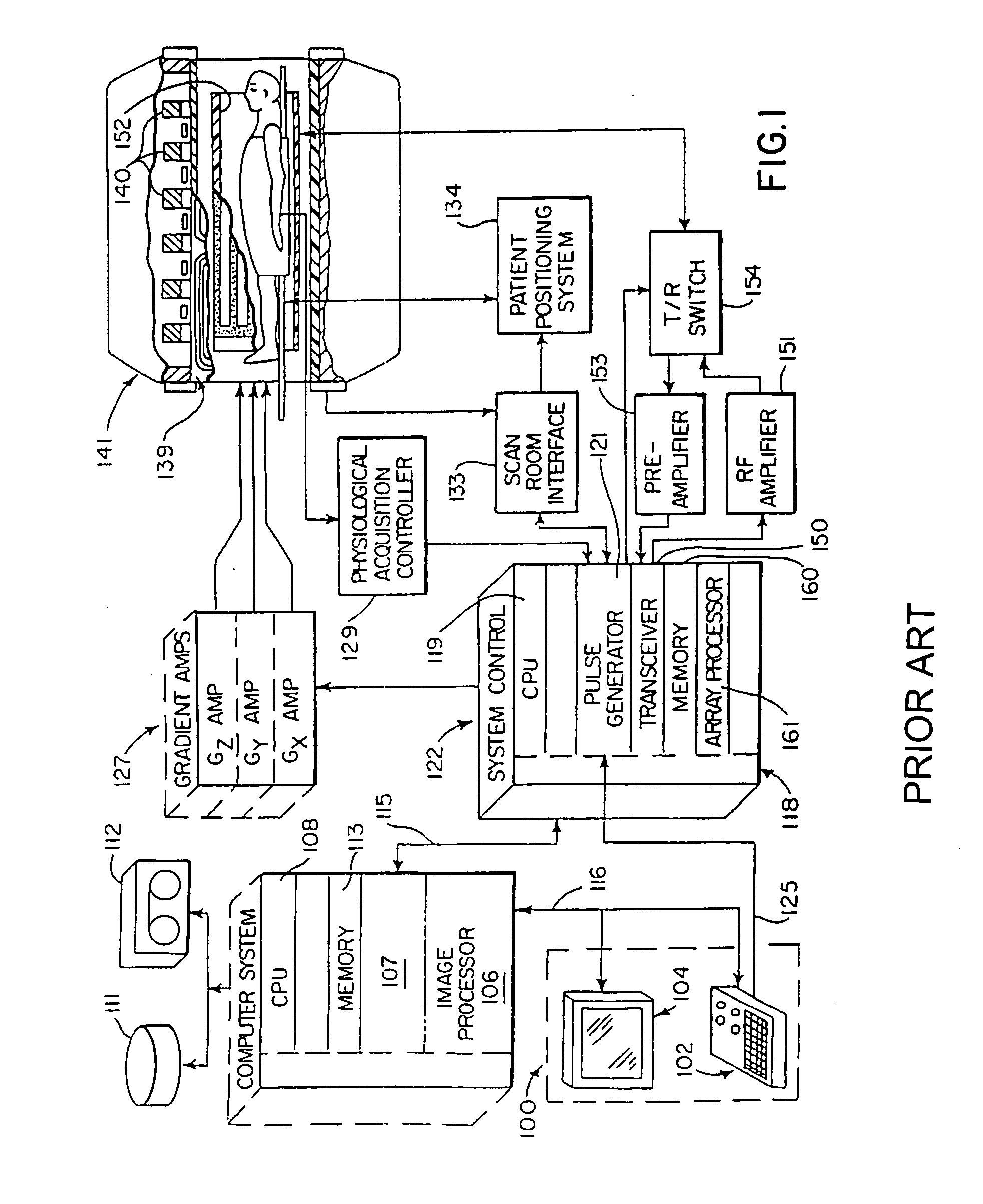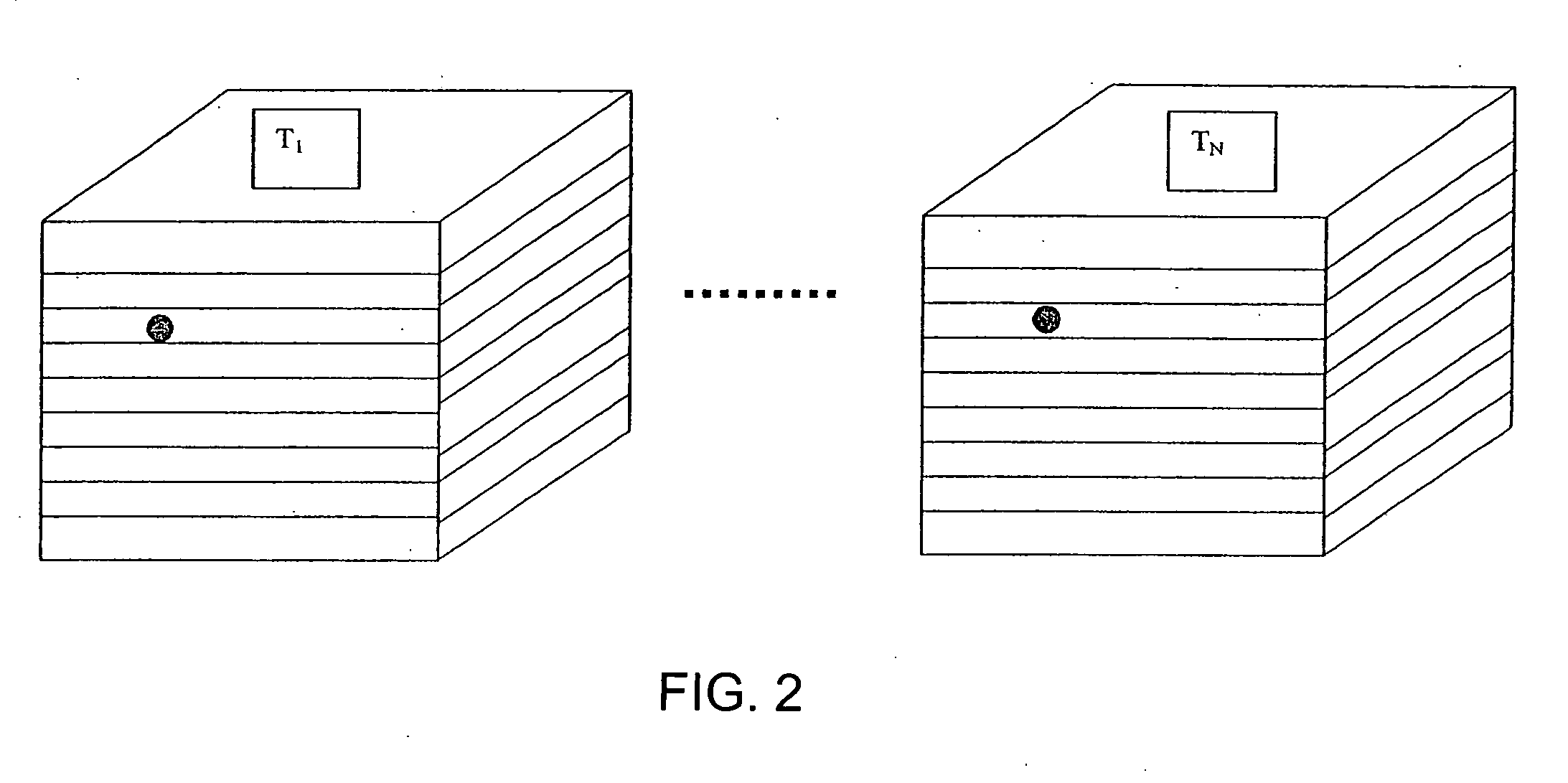Computer-aided detection system utilizing temporal analysis as a precursor to spatial analysis
a technology of temporal analysis and computer-aided detection, applied in the field of computer-aided detection (cad) in medical imagery, can solve the problems of no current method of providing feedback to a radiologist, abnormal tissue may or may not appear different from normal tissue, etc., and achieve the effect of improving the interpretability of results and speeding up analysis
- Summary
- Abstract
- Description
- Claims
- Application Information
AI Technical Summary
Benefits of technology
Problems solved by technology
Method used
Image
Examples
first embodiment
[0034] Referring now FIG. 5, an algorithm useful in a computer-aided detection system of the present invention is shown. After the data of FIG. 2 is acquired, it can be transmitted or otherwise transferred to the memory component 14 of the computer-aided detection system 10, or can be stored in a remote location accessible to the computer-aided detection system 10. After the four dimensional series of imaging data is provided to the computer system 10 in step 22, a region of interest is selected on the original acquired images. The specific region of interest (ROI) can be selected either spatially or temporally. To select the ROI spatially, a user can use the user input device 16, which can be, for example, a keyboard, mouse, joystick, or other device, to select boundaries on the original image either by drawing the boundary or by selecting the boundary using numerical coordinates. This selection can also be automated to separate, for example, body from background. To select the ROI...
second embodiment
[0040] Referring now to FIG. 6, in a second embodiment, the computer-aided detection system 10 processes the data through a series of iterations in which the scale space, e.g. the number of voxels evaluated in a given image, is varied between a minimum coarse level (as low as a 1×1) and a maximum fine level (such as 256×256). Iterations can be made at predetermined steps in scaled space. Here, an initial scale space and iteration level are selected prior to processing. After these parameters are selected, a specific region of interest (ROI) is selected either spatially or temporally, as described above with reference to step 22, and the image in the selected region of interest is then evaluated.
[0041] After a region of interest is selected, the temporal analysis 24 and spatial analysis 26 are performed as described above for the selected scale space. Then, in step 32, a determination is made as to whether the analysis has been performed at all the predetermined scale space steps. If...
PUM
 Login to View More
Login to View More Abstract
Description
Claims
Application Information
 Login to View More
Login to View More - R&D
- Intellectual Property
- Life Sciences
- Materials
- Tech Scout
- Unparalleled Data Quality
- Higher Quality Content
- 60% Fewer Hallucinations
Browse by: Latest US Patents, China's latest patents, Technical Efficacy Thesaurus, Application Domain, Technology Topic, Popular Technical Reports.
© 2025 PatSnap. All rights reserved.Legal|Privacy policy|Modern Slavery Act Transparency Statement|Sitemap|About US| Contact US: help@patsnap.com



